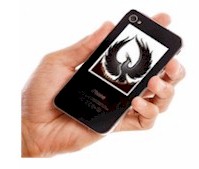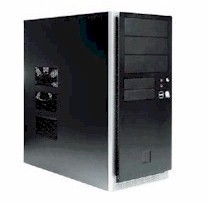|
|
DSC Tech Library
Predictive Dialer
 This section of our technical library presents information and documentation relating to Predictive Dialers and Auto Dialer software and products.
The PACER and Wizard phone systems are PC based call center phone systems that are recognized as premier inbound and outbound computer telephony systems. Features such as automatic call distribution (ACD), interactive voice response (IVR) and call recording have added a new dimension to the predictive dialer and auto dialer capabilities of these systems. These computer based dialing systems can perform various types of auto dialing campaigns simultaneously. These types include Predictive Dialing, Progressive Dialing, Preview Dialing and Dial on Demand.
This section of our technical library presents information and documentation relating to Predictive Dialers and Auto Dialer software and products.
The PACER and Wizard phone systems are PC based call center phone systems that are recognized as premier inbound and outbound computer telephony systems. Features such as automatic call distribution (ACD), interactive voice response (IVR) and call recording have added a new dimension to the predictive dialer and auto dialer capabilities of these systems. These computer based dialing systems can perform various types of auto dialing campaigns simultaneously. These types include Predictive Dialing, Progressive Dialing, Preview Dialing and Dial on Demand.
Predictive Dialer
A predictive dialer is generally a computerized system that automatically dials batches of telephone numbers, and developed from the autodialer. Predictive dialers are widely used in call centers.
While the basic autodialer merely automatically dials telephone numbers for call center agents who are idle or waiting for a call, the predictive dialer uses a variety of algorithms to predict both the availability of agents and called party answers, adjusting the calling process to the number of agents it anticipates (or predicts) will be available when the calls it places are expected to be answered.
The predictive dialer monitors the answers to the calls it places, detecting how the calls it makes are answered. It discards unanswered calls, engaged numbers, disconnected lines, answers from fax machines, answering machines and similar automated services, and only connects calls answered by people to waiting sales representatives. Thus, it frees agents from listening to unanswered or unsuccessful calls.
A predictive dialer can dramatically increase the time an agent spends on communication rather than waiting: a 2002 survey indicated an increase in talk time from twenty minutes in the hour to almost fifty. The system is most suitable for low quality lists and large numbers of agents; a high contact rate can overwhelm the system.
Commonly, the predictive dialer is interfaced into CRM software, to both generate call lists and report call attempts. Unsuccessful calls are often analyzed to determine if the number called needs to be called back later or needs special treatment, such as a manual or autodialed call by an agent to listen to an answer machine message.
Predictive dialer systems are commonly used by telemarketing organisations involved in B2C (business to consumer) calling as it allows their sales representatives to have much more customer contact time. Predictive dialers may also be used by market survey companies and debt collection services who need to contact and personally speak to a lot of people by telephone.
The experience for those who receive a predictive dialer call can be less satisfactory. There may an appreciable period of non-response before a call is routed to a sales representative. This annoys people and also gives them a chance to abandon the call. If no sales representatives is available for a successful call it is often disconnected. In certain countries this disconnection is a breach of regulatory codes.
Predictive dialers generally rely on the fact that when a person answers the telephone, they generally give a greeting, such as "hello". The system detects this greeting and switches the call to a free agent, sometimes also playing a prerecorded introductory script to the called person to cover the switching time. This makes the called person believe they have received a call from another person, rather than one assisted by a machine.
By failing to give the expected greeting, a called person can cause a predictive dialler to operate in an unpredictable manner. Some systems may detect ambient noise or background music or conversation as an answer, while others may perceive it as an unsuccessful call and disconnect the call. Some telephone system faults that disrupt speech in only one direction may also cause problems for predictive dialers and result in them processing calls incorrectly.
Call screening systems that use answering machines or similar services will often defeat a predictive dialer as the dialer system will not leave a message. This will often explain calls that are received but do not have a corresponding message.
How predictive dialing works
In order to provide the large increases in dial rates and agent productivity achieved, predictive diallers all work on a principle of dialling ahead to achieve the results they do. If a system has 100 agents working on it, the dialler will dial a larger amount, usually based on a preset ratio, such as 1.5:1, 2:1 etc. This means that for 100 agents logged on, the system will place 150 outbound calls. As these calls are made to the telephone network the dialler will monitor each call and determine what the outcome of the call was. From our 150 calls made, the system will immediately strip out any unproductive outcomes, such as busy calls (these are usual sent for automatic redial), no answers, answering machines, invalid numbers, etc. From what remains, if a call is determined as having been answered by a live human being then this call is only then passed through to an agent. The hope is that from those calls that are actually answered by human beings, then there will be enough agents that are able to handle those calls.
If there are not enough calls made ahead, then agents will sit idle, if there are too many calls made and there are not enough agents to handle them, then the call is typically dropped (the person just dialled is hung up on - if you have ever received a mysterious phone call where no-one was on the other end of the line, then most likely a predictive dialer was trying to call you). The trick for predictive dialler companies is to build their systems smart enough so they are able to quickly respond by increasing or decreasing the dialing ratio used in order to cause more or less calls to be made.
Types of predictive dialers
Predictive diallers all work along similar principles, but the architecture via which dialling is performed can vary greatly between manufacturers. There are two basic types of predictive diallers :
Soft dialers
Software only solution uses ISDN messaging, or a CTI link to provide call progress analysis for calls made. Software only diallers are often cheaper because they do not require expensive telephony components, but the quality of features such as Answering Machine Detection can suffer. Typically a software dialler is connected to an existing PBX system via the PBX CTI link. In many cases a specialised 'call classification' card is placed into the PBX to perform call progress analysis.
Pros:
- Cheap, less components in overall solution
Cons:
- Usually poor AMD & call progress detection.
- PBX requires greater number of telephony links for solution to work.
- When PBX/CTI software gets updated, dialler software typically must be updated also.
Hard dialers
Hardware diallers use dedicated telephony switches to perform call progress analysis and answering machine detection. Those switches usually have two main types of connections, agent audio and external audio. The agent audio connections are usually simple T1/E1/ISDN etc. telephony spans which are connected directly to an existing PBX (although other connection types that do not require a PBX are available such as Analogue or VoIP connections). When an agent first logs in for the day the dialler will place a call from the switch directly to the phone on the agent's desk. This open phone call between the agent and the dialler switch is then kept open for the duration of the session. The second type of connection is the external audio connection which is the connection that will be used to make outbound phone calls. These connections are typically ISDN/T1/E1 connections direct to the PSTN. When an outbound call is made and answered, the call is immediately joined to an already open agent audio connection of the agent selected to take the call.
Pros:
- (For an implementation using an existing PBX) Less telephony connections required (in hard diallers external audio connections can go directly to the PSTN, for soft diallers these all must be connected to the PBX).
- Dialler typically will not need upgrading in line with PBX/CTI etc.; since standard telephony connections are the only link between the PBX and the dialler, the dialler is less affected by software changes/versions.
- Superior answering machine and call progress detection abilities.
Cons:
- More expensive, more suited for larger (min. 20 seats+) call centers.
Auto Dialer
DSC offers an affordable entry level auto dialer phone system that utilizes analog phone lines. This 4 line auto dialing system includes our WIZARD dialer and softphone or comes optionally with our comprehensive software development toolkit.
Predictive dialing campaigns can be developed using our WIZARD software setup utility or we can provide you with a custom predictive dialer campaign. These applications can be easily ported to our digital T1 phone system (PACER) when your call volume requires a larger system.
Phone dialing campaigns can be quickly developed that call numbers from a phone list and when contact is made with an individual, the call can be routed to your online agent or to a work from home employee. If an answering machine is detected, a different message could be left on the machine.
This entry level auto dialer can be easily expanded by adding additional agent lines and software to support a small call center operation including complete CRM applications.
DSC provides voice broadcast software including our wizard development tool for creating voice broadcasting applications. This wizard guides you through each step when defining your outbound phone applications. Comprehensive dialing applications can be developed quickly. Simply record your phone prompts and fill in the blanks.
|
|
|


 This section of our technical library presents information and documentation relating to Predictive Dialers and Auto Dialer software and products.
The PACER and Wizard phone systems are PC based call center phone systems that are recognized as premier inbound and outbound computer telephony systems. Features such as automatic call distribution (ACD), interactive voice response (IVR) and call recording have added a new dimension to the predictive dialer and auto dialer capabilities of these systems. These computer based dialing systems can perform various types of auto dialing campaigns simultaneously. These types include Predictive Dialing, Progressive Dialing, Preview Dialing and Dial on Demand.
This section of our technical library presents information and documentation relating to Predictive Dialers and Auto Dialer software and products.
The PACER and Wizard phone systems are PC based call center phone systems that are recognized as premier inbound and outbound computer telephony systems. Features such as automatic call distribution (ACD), interactive voice response (IVR) and call recording have added a new dimension to the predictive dialer and auto dialer capabilities of these systems. These computer based dialing systems can perform various types of auto dialing campaigns simultaneously. These types include Predictive Dialing, Progressive Dialing, Preview Dialing and Dial on Demand.
